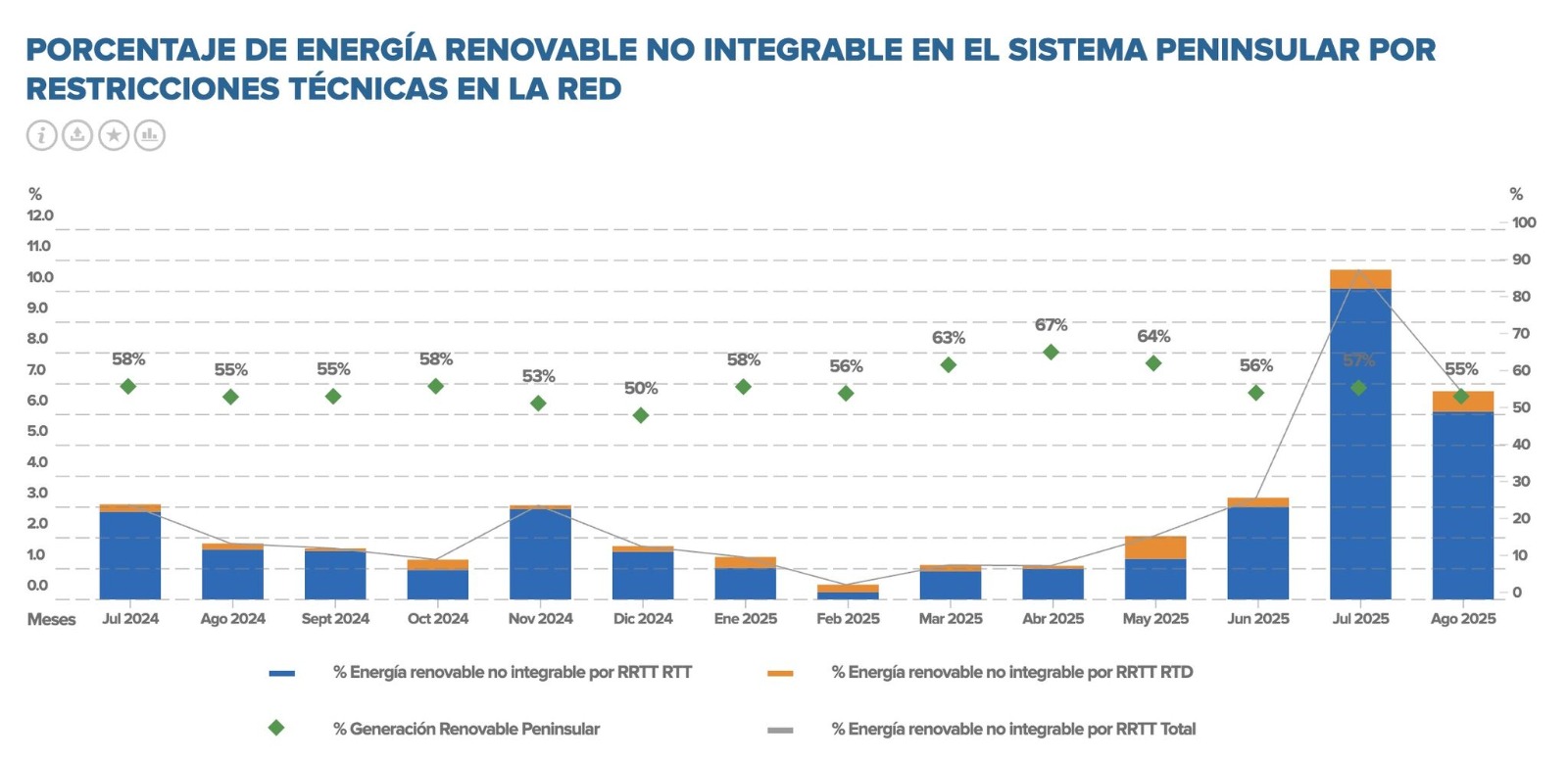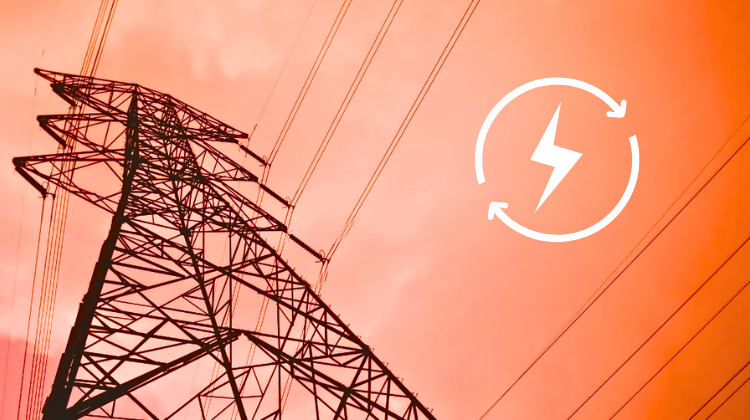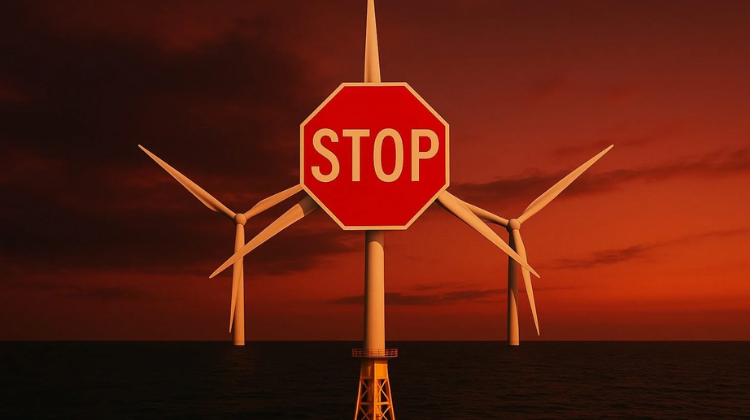Data from Red Eléctrica confirm that, while between July 2024 and April 2025 the share of renewable energy not integrated due to technical restrictions remained around 1–3%, from May onwards there was a sharp increase.

In July it reached a peak of almost 11%, before falling slightly to 7% in August. This marks a sustained escalation that represents a turning point in the integration of renewables into the peninsular system.
According to Carlos Martín Graña, Head of Operations at Enerjoin Spain, “from April/May solar irradiation rises significantly and therefore two things happen: the generation capacity of solar plants increases and demand decreases due to the growth of self-consumption.”
This results in an oversupply at certain times of the day that the grid cannot absorb.
Added to this, in the words of Kiko Maza, consultant at WeMake Consultor, is the change in Red Eléctrica’s approach after the April blackout: “Restrictions are now stricter, so we can deduce that Red Eléctrica has changed its criteria for integrating renewables.” Taken together, natural and regulatory factors have driven up the level of curtailed energy.
Consequences for renewable deployment
The rise in curtailment is not only a technical issue: it directly impacts the economic viability of projects.
Speaking to Strategic Energy Europe, Maza warns: “It forces more energy to be curtailed in business cases, which makes it harder to make the numbers work and for the project to secure financing.” The greater the uncertainty around generation being utilised, the higher the risk for banks and investors.
At the same time, system security costs have soared: according to El Confidencial, Red Eléctrica’s reinforced plan increased operating costs by almost 97% over the summer, despite wholesale market prices remaining low.
Across the sector, there is consensus that installing more renewable capacity without tackling current restrictions will only make the problem worse. Martín Graña sums up the solution in three words: “Grid + storage + demand. Otherwise, it’s unviable.”
- Grid reinforcement: investments in transmission and distribution to ease pressure at critical nodes, especially in areas with high solar and wind penetration.
- Storage: large-scale roll-out of batteries, green hydrogen or pumped hydro to absorb surpluses.
- Demand management: measures to encourage flexible consumption, from industrial electrification to smart charging of electric vehicles.
What is clear is that Spain’s energy transition has reached the point where it must ensure that the renewable generation already installed can be fully integrated into the system.
Otherwise, the growth of the renewable fleet could become unsustainable both technically and financially in meeting the PNIEC objectives. This means installing at least 30 GW of additional wind and 42–43 GW of additional solar capacity over the next six years.






























